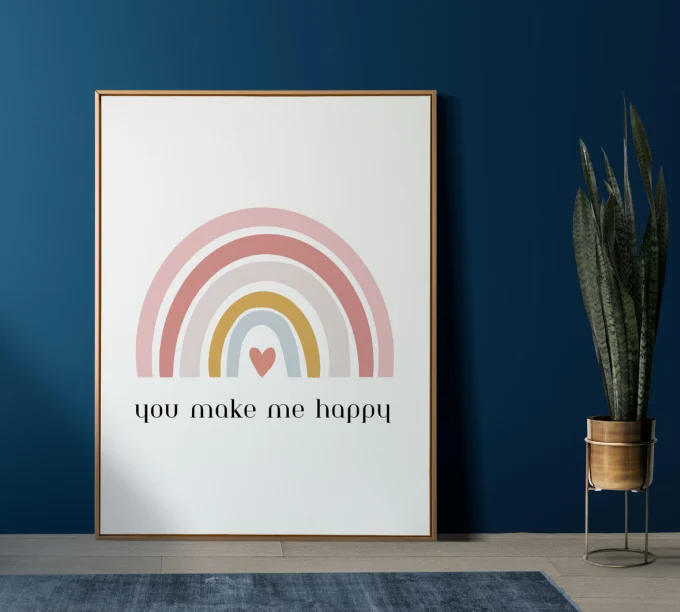Digital wall art refers to artwork or designs that are created digitally and intended to be displayed on walls or other surfaces. This form of art has gained popularity with advancements in technology and the availability of digital tools and platforms.
Here are some key aspects and considerations related to digital wall art:
-
Creation and Design:
- Digital wall art is created using various digital tools and software like Adobe Photoshop, Illustrator, Procreate, CorelDRAW, or other graphic design applications.
- Artists use digital pens, tablets, and sometimes even touchscreens to create their designs digitally, mimicking traditional art techniques.
-
Types of Digital Wall Art:

- Digital Prints: High-quality digital reproductions of original artworks.
- Typography and Lettering: Artwork featuring stylized text and typography designs.
- Mixed Media: Combining digital elements with traditional art or textures.
-
Display and Medium:
- Digital art can be printed on various mediums, including canvas, paper, metal, wood, acrylic, or even displayed on digital screens or monitors.
- Interactive displays or digital frames can also be used to showcase dynamic or changing digital artworks.
-
Customization and Personalization:
- Digital wall art can often be customized to match a specific color scheme, size, or theme to suit individual preferences or interior design requirements.
-
Purchasing and Distribution:
- Digital art can be purchased online from digital art marketplaces, artist websites, or even through art exhibitions and galleries.
- Some artists offer digital downloads that buyers can print and frame themselves.
-
Advantages:
- Versatility: Digital art can be easily resized and adapted to fit various spaces and styles.
- Durability: When printed on quality materials, digital wall art can be long-lasting and resistant to fading or damage.
- Accessibility: Easier for artists to distribute their work to a global audience through online platforms.
-
Challenges:
- Authenticity: Concerns regarding the uniqueness and ownership of digital art, given the potential for easy replication.
- Technological Dependencies: Digital art relies on technology for creation, display, and distribution, which can be a challenge in terms of compatibility and maintenance.
Digital wall art has opened up new possibilities for artists and art enthusiasts, allowing for a fusion of traditional and modern artistic techniques and expanding the ways in which art can be enjoyed and integrated into living spaces.
Digital wall art refers to artwork or designs that are created digitally and intended to be displayed on walls or other surfaces. This form of art has gained popularity with advancements in technology and the availability of digital tools and platforms.
Here are some key aspects and considerations related to digital wall art:
-
Creation and Design:
- Digital wall art is created using various digital tools and software like Adobe Photoshop, Illustrator, Procreate, CorelDRAW, or other graphic design applications.
- Artists use digital pens, tablets, and sometimes even touchscreens to create their designs digitally, mimicking traditional art techniques.
-
Types of Digital Wall Art:
- Illustrations: Detailed drawings and paintings created digitally.
- Digital Prints: High-quality digital reproductions of original artworks.
- Typography and Lettering: Artwork featuring stylized text and typography designs.
- Mixed Media: Combining digital elements with traditional art or textures.
-
Display and Medium:
- Digital art can be printed on various mediums, including canvas, paper, metal, wood, acrylic, or even displayed on digital screens or monitors.
- Interactive displays or digital frames can also be used to showcase dynamic or changing digital artworks.
-
Customization and Personalization:
- Digital wall art can often be customized to match a specific color scheme, size, or theme to suit individual preferences or interior design requirements.
-
Purchasing and Distribution:
- Digital art can be purchased online from digital art marketplaces, artist websites, or even through art exhibitions and galleries.
- Some artists offer digital downloads that buyers can print and frame themselves.
-
Advantages:
- Versatility: Digital art can be easily resized and adapted to fit various spaces and styles.
- Durability: When printed on quality materials, digital wall art can be long-lasting and resistant to fading or damage.
- Accessibility: Easier for artists to distribute their work to a global audience through online platforms.
-
Challenges:
- Authenticity: Concerns regarding the uniqueness and ownership of digital art, given the potential for easy replication.
- Technological Dependencies: Digital art relies on technology for creation, display, and distribution, which can be a challenge in terms of compatibility and maintenance.
Digital wall art has opened up new possibilities for artists and art enthusiasts, allowing for a fusion of traditional and modern artistic techniques and expanding the ways in which art can be enjoyed and integrated into living spaces.

No comments yet